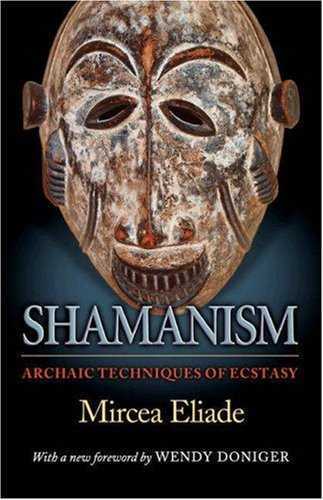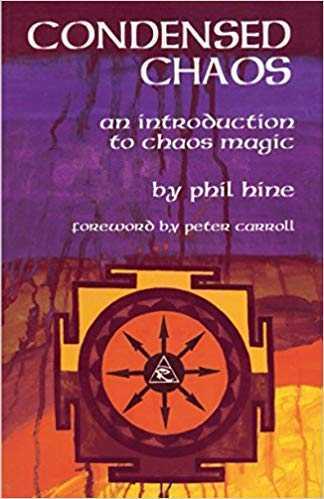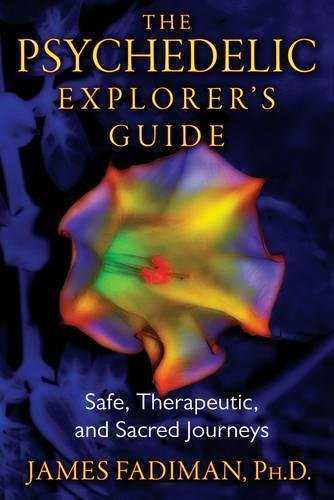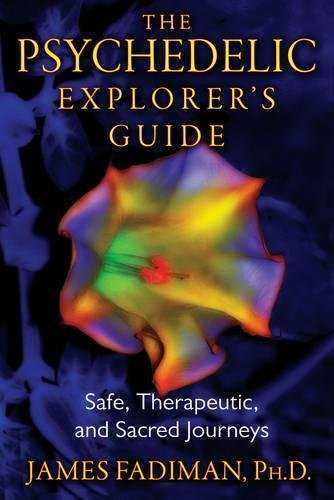Psychedelic Shamanism & Neo-Shaman Framework
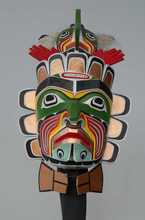
What makes a modern Shaman? How to bring about a resurgence of the Shaman? It is well known that psychedelics and other types of hallucinogens have been used by Shamans all around the world for thousands of years. Perhaps even, for tens of thousands of years. Psychedelic Shamanism is by no means just a contemporary phenomenon.
Let alone Shamanism, it is also possible that all forms of magickal and occult traditions, religions, and therefore even culture itself came into being, because our ancestors stumbled upon psychedelics and other “hallucinogens”. They bring us in contact with various “entities” and drive us to other worlds complete parallel to our own, after all.
Note: By no means do we endorse consuming any sort of drugs, including psychedelics illegally. However, we do believe that prohibition does not discourage drug use.
It can in fact, make it more attractive and hard to regulate, since the production inevitably gets handed over to criminals. This also encourages "drug tainting", making physically harmless substances such as LSD, harmful.
The purpose of this article is to minimize harm whilst also encouraging "psychedelic shamanism" as a method to encourage spiritual growth.
The mythical “soma” for example, appears to have completely shaped the Vedic religions. It is a form of psychedelic that enabled the first Rishis to “form the Gods”.
To quote the Rig Veda: “On flows the potent juice, sustainer of heavens, the strength of Gods, whom men shall hail with shouts of joy” (Rig Veda 9, 76, 1). The soma created the first seers, who in fact, used to be forest dwellers and very much like what we know today as “Shamans”.
In comparative studies of Indo-Iranian cultures, soma was identified as “haoma”, which is the term for Peganum Harmala native to Eastern Iranian region, west of India. If you didn't already know, it is an MAO inhibitor, similar to Banisteriopsis caapi (also known as Ayahuasca) which makes DMT orally active. It was also thoroughly used in ancient Iranian Zoroastrian rituals. Similar use of it and various other psychedelics, can be found in ancient cultures all throughout the globe including Arabic, Egyptian, Greek.
Overtime however, their use in spiritual and religious context seems to have gradually dwindled and is now all but non-existent. They had to “locked away” because they were deemed “dangerous” by the mainstream religions, or they were somehow mysteriously replaced by other types of plants and ingredients in ritualistic settings (in the case of the Indian vedic cultures, for example). Only in certain pockets of the world (Peruvian Shamanism comes to mind), do psychedelic Shamanism seem to be still flourishing.
In most modern day societies, they're all but banned. And though they are used plenty despite their legal status, it seems to be largely concentrated among “trippers” who want to use them as party tools. The irresponsible use and failure to see their power and potential also added to the haste in which they got scheduled, banned and socially shunned.
In the best case, they are now resurfacing in creative endeavors in the form of “micro dosing” in the Silicon Valley. Other forms of positive use trends seems to be emerging in the scientific community and in controlled medical settings (treatment of various mental disorders, addictions, PTSD, epilepsy to name a few)
These are all well and good but they still do not sufficiently use their full potential. However, there now seems to be a resurgence of the phenomenon of "Psychedelic Shamanism".
It is our hope that this resurgence of Psychedelic Shamanism will be swift, for it has the potential to lead humanity to rekindle the ancient knowledge of the Shamans, connect us back with nature and the universal forces.
It will let us be reminded of the importance of subjectivity and the how scientific materialism that our society today is wholly predicated upon, is nothing more than a useful “trip”. Perhaps even the most useful today, but it still very much incomplete.
Science enables us to “trip out” using mathematical tools, results of which are verifiable in the objective world, which arguably can be seen as just another form of "tripping out", for it is a model inside our heads in normal, waking state of consciousness. The practical end result of such an endeavor seems to be to arrange material in a manner that enables us to gain more comfort, efficiency and power more than reaching closer to reality.
It does not seem to have improved the overall human condition much, beyond the point of fighting against religious fundamentalism and oppression and the ridiculous ideas and distortions of the dark ages. This is much like the concept of the Red Queen Hypothesis in biology. While we have evolved complex scientific tools, we seem to have also evolved commensurate problems with it.
It does not enable us to access the hyperspaces completely inaccessible to language, mathematics and our normal, everyday waking consciousness either. It's use seems to be limited to everyday waking consciousness.
Also, how can we be sure that science is the only way to “trip out” to become more efficient in the objective world? Who is to say that the objective world that we know and perceive through our everyday consciousness is the only reality there is?
And what about the founder of modern materialist rationalism, Renee descartes?
“On the night of 10–11 November 1619 (St. Martin's Day), while stationed in Neuburg an der Donau, Descartes shut himself in a room with an "oven" (probably a Kachelofen or masonry heater) to escape the cold. While within, he had three dreams and believed that a divine spirit revealed to him a new philosophy.
Upon exiting, he had formulated analytical geometry and the idea of applying the mathematical method to philosophy. He concluded from these visions that the pursuit of science would prove to be, for him, the pursuit of true wisdom and a central part of his life's work. Descartes also saw very clearly that all truths were linked with one another so that finding a fundamental truth and proceeding with logic would open the way to all science”.
Now that's pretty “trippy”, don't you think?
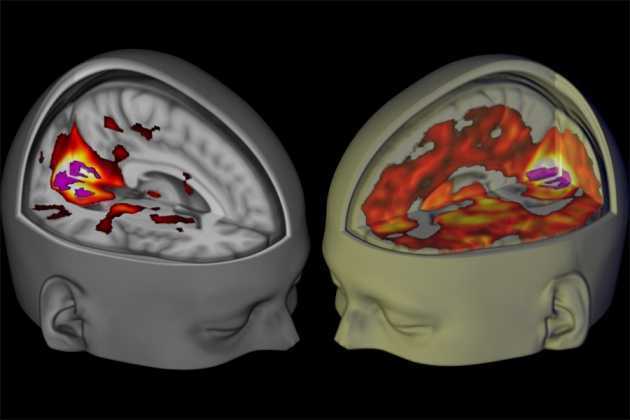
Brain imaging studies with hallucinogens (Left: Placebo, Right: LSD) : Imperial College Of London
In a practical sense, such a reminder in humility will perhaps enable humanity to reconsider it's priorities and its role in this world and ponder whether or not the “materialistic tripping out” for the sake of increased comforts, capabilities and power whilst behaving cancerously to the world that we are part of by tirelessly and mindlessly chasing after ghosts are the only things there is to life. It is in this hope and spirit, that this guide is written.
Psychedelic Shamanism: Why hallucinogens?

Apart from the fact that many authors of mystical texts credit hallucinogens (For example the Soma) for their ideas, Terrence Mckenna’s thoughts from one of his speeches is very relevant here. That is, isn't it the case that the Yogis, the Tantrics and so on found methods to achieve ecstatic states and perform magick without the need to ingest hallucinogenic plants?
How likely is that Shamanism evolved and exist independently to the use of hallucinogenic plants? The answer is that that it is very unlikely. It could be argued that coexistence and dependency on each other is what nature intended, to begin with. We are not isolated beings, separate from nature but part of it. Nature is an extension of us, as much as we are an extension of it. This is something we seem to have long forgotten.
The idea of the origin of mystical experiences being entheogens and using hallucinogens for mystical revelations isn't an ugly thing as many would be lead to believe. In fact, it is the opposite. The beauty underlying this idea is that we would be forced to admit that we really cannot do anything alone. If we can admit that the very air we breathe is dependent on nature, why not mystical experiences?
Perhaps humanity has been stripping away it's mystical nostrils! The idea of separation between us and nature is really an illusion. We are it. This idea of coexistence with nature constitutes the very essence of Shamanism. Therefore, there really is no shame in admitting that the origins of all mystical experiences in fact, may come from hallucinogens in nature, from the phenomenon which later became Psychedelic Shamanism.
Who is this guide for?
This guide is written, with the modern day Shaman and occultist in mind.
There are plenty of instructions on how to use psychedelics for personal development, creative endeavors and for regaining mental health and balance.
However, there seems to be little being done to mend the divorce between occultism and psychedelics that has happened in the past.
This guide is for:
- Experienced Psychonauts who is interested in exploring Shamanism and the occult. You may find other articles in this website of value also.
- Experienced occultists and Shamans who want to tap into the power of psychedelics and into the world of Psychedelic Shamanism.
If you have little experience with either, you should consider stepping back from using really high doses and psychedelics like Salvia and DMT.
Psychedelics, especially in the higher doses can be extremely useful tools, but it can also tear you apart psychologically. Not only that, if you do not have an experienced guide that can help you through it, you might end up physically damaging or even killing yourself if there is a psychosis episode.
Only a mind that has been thoroughly trained and prepared should attempt "Psychedelic Shamanism" and psychedelics at all, at the higher doses. Details of this will of course, be given below but keep in mind that no amount of instructions can be “one size fits all”.
What is “Shamanism”? Who is a “Shaman”?
There is a LOT that could be said about Shamanism and it's intricacies and subtleties. To try to encapsulate it all in this article would be unrealistic.
But to make it simple, Shamanism can be thought of a magicio-religious phenomenon that has the most pre-religious elements in it. It is not a religion and nor can it be called science as we know it today, but it can be thought of as a form of “pre-rational” science. It has methodologies whereby which the Shaman achieves experiences not available to normal waking consciousness, and is thereby able to navigate through not only his/her own psyche, but also through other worlds and interact with higher entities that perhaps represent universal forces.
“The Shaman is therefore able to perform magick, heal, and do fakir type miracles. He is also a psychopomp, a mystic and a poet.” -- Mircea Eliade.
According to the book “Shamanism: The archaic techniques of ecstacy” by Mircea Eliade, “Shamanism = techniques of ecstasy”. The overarching goal that can be observed among Shamanism all around the world is boundary disillusion with the universe, something that can be observed even among all forms of Eastern mysticism (Yoga, Tantra and so on).
This enables a perception and paradigm shift, whereby the world is seen differently. It could be argued that this capacity was inbuilt in the evolutionary mechanism of homo sapiens, or perhaps even other species of homo or even more primitive primates who were our ancestors, waiting to be unlocked, as a result of their encounter with entheogens. This could be the reason for the evolution of the phenomenon of Shamanism, and therefore, religions and mysticism.
Now although the word “Shaman” originates from Russian, from the Tungusic “šaman” because the phenomenon was likely first observed and is pre-eminent today in Sibera and Central Asia, Shamanism is a phenomenon that can be observed all throughout the world in Oceania, North and South America, South East Asia, Africa and so on.
When we take a look at Shamans and Shamanic practices all around the world, the objective, the experiences and the techniques are extremely similar and there are many parallels. Other than for academic rigor, the differences are largely minute. It is irrelevant for those who are seekers.
Anthropological attempts to encapsulate Shamanism is really not as important for our purposes as understanding that Shamanism at its core is about a drive towards the “authentic reality”, which exists beyond the matrix of culture and societal norms.
It is highly recommended that you give the following book a read if you are serious about understanding Shamanism, although Eliade was of the view that Psychedelic Shamanism or the use of “narcotics” in Shamanism as he called it, was a decadent form of Shamanism (which was later proven false):
Recommended
Shamanism : Archaic Techniques of Ecstacy
A Shaman is almost always an “elect” and goes beyond the cultural confines of the society that he originates from and lives in.
How this Shamanic “initiation” happens and who becomes a Shaman will be covered briefly in the next section and we shall see how it is relevant to modern Shamanism in the "civilized" world, but keep in mind that although after this initiation there is something similar to the modern day psychotherapy idea of reaching “mental balance”, it is only a start. The real point is to attain to a reality that goes beyond the “matrix”, so to speak, to the spaces that cannot be defined by language and mathematics.
How does this help us practically at all, and how does it carry over to the material world that we are all to familiar with?
To start, consider the example of the famous chemist August Kekulé and the finding of the benzene ring : “He said that he had discovered the ring shape of the benzene molecule after having a reverie or day-dream of a snake seizing its own tail (this is an ancient symbol known as the ouroboros).”
What about the earlier example of Renee descartes’ founding of material rationalism?
Coming closer to our times, what about the psychedelic trip that inspired the “whole earth” catalog, which was the first picture of the entire earth to be ever taken and how it created a shift away from the view that the Earth was some sort of a static, stone rubble to a view that it was actually a beautiful, living, breathing organism. This gave fuel to the green movement!
The examples are plenty out there. Human history is filled with examples of intervention from the hyperspaces.
One does not need to ponder much to understand how much of a difference these artifacts from “other worlds” and altered states of consciousness could make for us, for our everyday existence.
The Shaman is the original, archaic scientist. But at the same time the shaman is also the psychologist, the magician, the poet and the mystic. The Shaman in a tribe is more educated than the average person in the tribe, has near double the vocabulary and acts as the encyclopedia and repository for the oral traditions.
Perhaps, the resurgent Shaman is also going to be the next renaissance man.
Path to Shamanism: How does one "become" a Shaman traditionally?
There are different ways a Shaman is elected in different places all throughout the world. In Australia for example, a Shaman might voluntarily choose to be elected on top of on the characteristics he/she emits, whilst in other places, Shamanic initiation is strictly hereditary.
There are a myriad of subtleties and details for electing the candidate that has to go through the initiation training, based on the tribe or society. Nevertheless, the potential Shaman usually display one or more of the following characteristics:
- Nervous disorders and psychiatric conditions such as epilepsy, schizophrenia, hysteroid crisis and so on
- Being dreamy and having repeated dream visions, experiencing repeated sleep paralysis episodes, being absent-minded, loves seclusion and visits places that are unfrequented etc.
The reason for this is perhaps because for the archaic humans, one of the ways glimpses of trance states and "other worlds" were accessible to them were through such disorders and consequently, withdrawal of the senses and the access to the “background” matrix of the universe. This can be said especially for cultures thriving in extreme weather conditions (the Eskimos, for example).
Think lack of food, vitamins etc., leading to mental hysteria and sense withdrawal. It is no wonder that even in more modern magickal and occult traditions, fasting, lack of sleep and so on are considered ways to access trance states and other worlds. This makes sense, because in such conditions, the physical body goes closer to sensory deprivation and death. Perhaps the mind then has the ability to shut down and access various hyperspaces in advance, before death. Defeating the fear of death and other forms of "ego" death after all is considered primary to the access of "satori"or ”nirvana" as well.
However, it is not that "mental illness" and vague characteristics automatically qualifies someone to become a shaman.
A shaman is one who overcomes it and succeeds in curing the psychological instabilities or calming the "spirits" within himself. The initiation of a shaman is equivalent to a cure.
It is not that the Indonesian or Eskimo Shaman for example, owes his/her powers to epilepsy. It is the fact that he/she can control epilepsy at will. The latter learns to use it to induce trance states at will. One who fails to go through the initiation is usually no Shaman at all.
Shamans also have normal nervous constitution, achieve excellent degree of concentration, memory (way above the average), meditative powers and the ability to navigate their own psychocosm at will. If he/she has cured the self and is able to cure others, and if he/she can navigate his/her own psychocosm and navigate others' psychocosm he/she is in essence, the original mental doctor. It does not take much thinking to understand how one who has not navigated his own subjective psychocosm and dealt with the "spirits" within is always going to be inferior to one who has. This is astonishing because it means that our present day psychotherapy has a LOT to learn from Shamanism.
Now it must be noted that not everyone becomes a Shaman. Only a few even become a potential candidate. Perhaps it is nature's way of creating roles in human society (just as it is observed in many animal societies). In this case, the Shamans can be looked at as gatekeepers to the other worlds.
This way, there remains the ventilation for influx of new phenomenon from the "worlds beyond" and creativity into culture whilst keeping the matrix system intact. If everyone became a shaman, there won't be a "game" or matrix after all!
This does not necessarily mean that the shaman is "special" in the cosmic sense. In fact, the very sense of separation is an illusion and it is the same existence that plays being both the shaman and the one who is deeply entrenched in the matrix.
Hence, for her (the existence) to play the game, she evolved so that most of her manifestations remain entrenched in the game whilst keeping certain parts of her act as the ventilation. All can be seen as the function of the great goddess. If you have any experience with various forms of occult disciplines like Tantra or even psychedelics, you'll have had experience with "her" at some point in your journey, appearing in different forms based on the substance and/or the structure of your psyche.
In many tribal cultures, the "shaman" is said to be obligatory. If there were no potential candidates who would become shamans, the ancestral spirits are said to torture children, haunt them in their dreams and at around adolescence, become designated.
Perhaps in our "modern" societies too, there always have to be certain "Shamans" to maintain balance within the material world.
The material world or the matrix is of course the "Maya" or the illusory game that we totally get indulged in and identified with to be a part of.
Shamans and other enlightened beings are perhaps nature's way of balancing it out or creating "ventilation" by opening holes in the material world to the worlds beyond. Today more than ever, we seem to be reaching the limits, suffocating within the matrix and there needs to be more ventilation from the worlds beyond. Strong case for the resurgence of Psychedelic Shamanism? We think so!
Shamanic initiation
The shamanic initiation is perhaps the most challenging journey a human being can go through. It involves the death of the ego and a rebirth. In most cultures, this is described as a going through the excruciating pain of the dismemberment of the entire physical body, including bones and internal organs and a consecutive reconstruction.
Once again, the specifics of how this initiation occurs differs from tribe to tribe and geography, but the overarching theme is that of passing through a difficult and painful ordeal to a kind of rebirth, often under the guidance of an older, experienced Shaman.
If you have had repeated experiences with sleep paralysis and/or psychedelics where you experience a “bad trip” followed by an ego death experience where you “let go”, the initiation can be compared to those experiences, BUT on steroids and under strict guidance from someone who has deep expertise, working with the “spirits” of the worlds beyond.
Once again, Mircea Eliade covers the details of Shamanic initiation of different tribes and peoples in the book Shamanism: Archaic Techniques of Ecstacy and it is recommended that any serious student of the occult go through it (except for the part about Psychedelics use 🙂 ).
The “modern day” Shaman and the use of psychedelics : A Psychedelic Shaman framework and a proposal

Most who use psychedelics use it as a party tool. Others who are more contemplative use it for personal growth. But rarely do we see anything like a “Psychedelic Shaman” in our "modern" world.
Now those who are actual Shamans will waste little time reading this article in hopes of learning something new. So, the question is, as denizens of “modern” societies, how do you become a “modern day” Shaman?
Of course, the best way to become a Shaman would be to learn from a Shaman itself traditionally. A lot of Shamanic skills cannot be transferred verbally, because they have to be learned pre-verbally and viscerally. A lot of such skills are much like chick sexing in this regard.
To quote from that article:
“How the accomplished chicken sexer achieves such accuracy is a riddle. According to Richard Horsey, a cognitive scientist who studies the process of chicken sexing, "If you ask the expert chicken sexers themselves, they'll tell you that in many cases they have no idea how they make their decisions."”
But good luck with trying to find an authentic Shaman who'd be willing to initiate you, and even if by some miracle that happens, good luck coming out of it successfully and/or alive.
So what would be the solution for denizens of modern societies? My proposal for the resurgence of the Shaman in our society, and those who are willing to step in to be a Shaman would be as follows:
- Deep dive into the world of magick and occult, including tantra, yoga and alchemy. The following book should serve as a good introduction:
- Learn to navigate through your own psychocosm through various techniques of altered states of consciousness. Check out: Altered states of consciousness guide here.
- Learn about various plant medicines and know how, what and when to use them:
- Learn the art of poetry and verbalizing more efficiently, new thoughts and ideas. The main way to bring back artifacts from other worlds would be through words. As inefficient as it is, it will serve you very little if your verbal skills are lacking. Remember, the Shaman is also a poet and possess vocabulary double that of the average person.
- Bonus: If your vocation is in Science and Mathematics, you have additional ways to bring back artifacts from the beyond. If you are willing, learning various mathematical tools will serve you very well. People who have experience working math whilst on psychedelics will know what I mean. If you don't want to however, there's no need to push it.
- Move into "Psychedelic Shamanism" by learning to work with psychedelics. It is quite easy to see how possessing above skills and knowledge with the use of psychedelics really can increase your chances of bringing back unique artifacts from your altered states and from the worlds beyond. One can only vaguely imagine the potential of practicing occult with the use of psychedelics. Isn't that what Shamans did anyway?
Perhaps there will come a day when a modern day Shaman will bring back an artifact from the worlds beyond, that will completely change the world. Perhaps we will find a tool to navigate and manipulate the material universe that goes beyond science itself!
Psychedelic Shamanism: Psychedelics as a Shamanic initiation tool
You might ask - - Isn't initiation a big part of being a Shaman? How am I going to initiate myself? Is that even possible? My contention is that it is possible, but it is important to make sure your psyche is prepared and well oiled.
This is why I would propose working with the occult and various techniques from systems such as yoga and tantra before attempting psychedelics at higher doses.
The “ego death" and other bizarre experiences you have with psychedelics at higher doses, and with Salvia and DMT will otherwise be not only potentially dangerous, but even if you somehow come out of it, will only be rewarding on a surface level.
If you do not have tools, the knowledge and the psychological landscape to integrate the experiences you have with psychedelics, then in the worst case scenario you will have permanently damaged your psyche. In the best case scenario, all that will happen is that you will come out of it psychologically unscathed, but shocked and in awe. If you really push for integration, it will have at best helped you with some amount of “personal growth”.
That's not a bad thing, but If that's all that you want, then by all means, ignore everything that was suggested in this article. Here, the discussion is about the resurgent psychedelic Shaman after all!
Access alternate states of consciousness using methods other than psychedelics
Speaking of cultivating a psychological landscape: While psychedelics and other hallucinogens may be the reason for the emergence of the phenomenon of shamanism, and while it may be arguably to most potent tool to access your own psychocosm and the other worlds, it is useful to have alternative gateways.
In fact, it may be perhaps better to work with these tools before attempting anything psychedelic Shamanism related. Not only will it be useful for yourself, but it will enable you to help OTHERS who are not ready for psychedelics yet.
Here are the skills that any modern day Shaman is required to master:
- Lucid Dreaming and sleep paralysis
- Trance and "gnosis" inducing methods
- Breathwork, like holotropic breathing
- Sensory deprivation
- Meditation
- Hypnosis
To read more about learning to master these alternate states of consciousness, it is recommended that you read our guide here.
The relevance of Shamanism: Are the Shamanic experiences and other worlds “real”?

What is reality? According to Oxford dictionary definition: “The state of things as they actually exist, as opposed to an idealistic or notional idea of them”.
Now of course, here, we have to define what “actually exist” means.
The definition of “exist” is: “have objective reality or being”.
It's easy to see how if we merely stick to definitions, that we're doomed to be stuck in circular reasoning.
Therefore, let us first consider two ideas - - that of solipsism and of Kant's philosophy of idealism.
Solipsism: Only one's own mind and subjective experiences can be absolutely certain to exist.
Idealism: “Human experience of things is similar to the way they appear to us—implying a fundamentally subject-based component, rather than being an activity that directly (and therefore without any obvious causal link) comprehends the things as they are in themselves. The doctrine is most commonly presented as the idea that time and space are just human perceptions; they are not necessarily real concepts, just a medium through which humans internalize the universe”.
That is, while we can understand and perceive things using tools such as our senses and to go beyond our senses with scientific tools, it is impossible to know the true nature of reality and that there are phenomenon that are yet to be even perceived or that which cannot be perceived at all using all the present tools at our repository (including scientific tools).
These claims are of course, logical and you cannot really object to them but make them irrelevant in the following manner:
That is, the rationalist materialistic view maintains that from a pragmatic, realistic standpoint, these claims are irrelevant because they do not have any predictive value. For example, the physical law of thermodynamics and newton's law of gravitation is going to manifest itself, regardless of whether or not you believe there is an actual objective reality.
Hence, the predictive value in considering them as objective reality is valuable in informing the so called “subjective experience” and that therefore, it is the only reasonable view to hold. String theory is a great example of this. Whilst it presents to us a beautiful and elegant mathematical picture of the universe, it does not have a predictive value because it still hasn't been tested, and whether or not it will be tested still remains a mystery. Therefore, it remains largely an aesthetic artifact in the scientific community.
In summary, it maintains that, since the materialistic, scientific findings are consistent with our subjective experiences, it is highly reliable, and so, it is the only thing that is relevant.
However, consider this example:
Consider five pictures of a Shaman behind a display case in a museum. Each picture is made in the following manner:
- A photographic picture of a Shaman living in the Amazonian jungle
- A hyper realistic portrait (oil painting) of the same Amazonian Shaman
- A digital rendering of the same Amazonian Shaman
- A hyper realistic oil painting of the same Amazonian Shaman
- A photograph of a hyper realistic statue of the same Amazonian Shaman
Now each "picture" of the Shaman appears identical to each other. If you pick one and try to guess the process of how EXACTLY the print was made, your chances of guessing correctly would be 1/5.
However, even if you are wrong, your hypothesis would still be consistent with how the print is, if you try to reproduce it using any of the above methods. Is the degree of consistency of your "hypothesis" or guess here an actual measure of reality?
There could be an infinite ways the picture of the shaman could be produced. And if you choose to reproduce it in any way, it could appear consistence with every other way!
What about numbers and mathematical sequences that may have lead to the number? The number in itself tells you nothing about the mathematical sequences that may have lead to that number. There are infinite ways to arrive at the number 5, and each way will be "consistent" with the result.
Scaling it up to the physical laws of the universe, the consistency of our hypothesis and scientific findings with our experiences applying them tells us nothing about the underlying reality about the universe itself.
Therefore, assuming that the materialistic, scientific findings are consistent with our subjective experiences, it is highly reliable, and so, it is the only thing that is relevant is a lazy intellectualism and a mistake
While science and materialistic rationalism have given us an understanding of the universe like no other, the logical position to hold is that we still know very little and that the probability that our present tools gets us closer to the true nature of reality is infinitely unlikely.
If materialistic rationalism and scientific methods emerged from something pre-verbal and pre-rational, then it it may just be that there are other methodologies that are hanging out there, in the same place, within the realms of the chaos of the unknown, to get us closer to “reality”, faster, and more efficiently. This, I suspect, is at the hands of the modern Shaman and to discover, by rekindling Shamanism from where the present day tools of materialism evolved from to begin with.
If some of the brightest minds have no problems working with wholly abstract ideas such as string theory, then why not go further? Why not consider searching viscerally and in places where our present day ideas and theories came from? Every major idea that has predictive value in the present, began as wholly abstract after all.
And even if such an effort remains futile, rekindling shamanistic and occult ideals will enable us to better navigate our own psyche (using tools such as archetypal anthropomorphism of aspects of our own psyche, for example), boost our creative powers and help us develop a better relationship with the nature around us. In other words, we have everything to gain and nothing to lose.
If we stick to only to our present day, entirely materialistic and negatively nihilistic viewpoint however, we just might miss out on an aspect of reality accessible to a framework unknown to us at the moment, which might be necessary for a quantum leap and to avoid destroying ourselves.
Shamanism to assist others
After the Shaman has developed enough skill to navigate his/her own psyche and the other worlds, the primary objective now becomes to assist others.
Now this is not akin to performing an altruistic act to boost the ego. Quite the contrary. In order for the Shaman to fully realize his Shamanic potential, he/she MUST assist others. The Shaman becomes much like a well in this regard.
How can this be done? There are a myriad of ways:
- Healing (both physical and psychical)
- Acting as a guide and watching over while the person goes through altered consciousness states and “other worlds” (both psychedelic and otherwise).
- Helping them integrate their experiences after they have had them.
- Initiating others who exhibit Shamanic potential.
Of course there are plenty more, and the experienced Shaman will know instinctively and intuitively how to help most effectively. For the budding Shaman, going through following books are highly recommended:
Recommended
The Psychedelic Explorer's Guide: Safe, Therapeutic, and Sacred Journeys
Behind the Veil: The Complete Guide to Conscious Sleep
Knowing the effects and uses of different hallucinogens
Classes of hallucinogens
There are three classes of hallucinogens: psychedelics, dissociatives and deliriants. Now Shamans are known to work with all three classes of hallucinogens, including deadly deliriants that would almost always bring about a negative experience and cause permanent physical harm, including blindness.
Unless you are some sort of a highly advanced Shaman or a demigod, it is highly recommended you stay completely clear off deliriants. To learn more about the different classes of hallucinogens watch the following video:
Effects of different psychedelics
It is important to note that different people have different experiences under the effects of the same substance. The effects will depend not only on the genetic make-up, but also on the state of mind and state of being, at the time of having the experience.
Nevertheless, it will be highly useful for the inexperienced to know what to expect with each substance and when it would be appropriate to take them. The following is a rough guide:
Beginners
- LSD: https://psychonautwiki.org/wiki/LSD
- Psilocybin: https://psychonautwiki.org/wiki/Psilocybin_mushrooms
- Mescaline: https://psychonautwiki.org/wiki/Mescaline (most recommended for beginners)
Intermediate
- All of the beginner ones at medium-high doses
- Ayahuasca: https://psychonautwiki.org/wiki/Ayahuasca
Advanced
- DMT: https://psychonautwiki.org/wiki/DMT
- Salvia (highly not recommended unless very advanced): https://psychonautwiki.org/wiki/Salvinorin_A
Keep in mind the set and setting and ALWAYS have a trusted guide who can sit with you throughout the experience. And also, ALWAYS start with low doses and spend tons of time integrating your experience before moving onto the next experience.
The real growth happens during the integration phase, not when you are “tripping out”. Therefore, the phenomenon is much like muscle building. If you do not allow your muscles to repair and grow before you work the same muscle group again, you do not progress!






